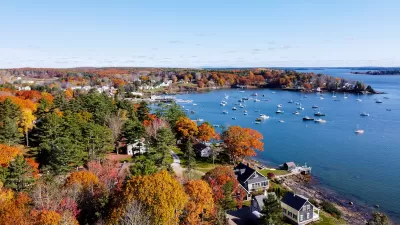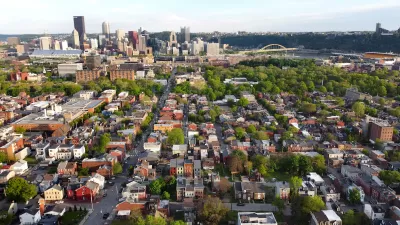Changes in state law that rolls back regulations on septic systems could spark more residential sprawl in Maryland's rural areas.

The Maryland Department of the Environment has removed a requirement for nitrogen removing septic systems except when located next to bodies of water. As Tom Horton of the Bay Journal News Service writes, this change has the potential to generate new rural sprawl development by making development cheaper.
In 2012, Maryland Governor Martin O'Malley passed a law that limited development on primarily agricultural and forest lands and instituted a requirement that new septic systems remove nitrogens, which Horton writes made development more expensive, but also less polluting. The benefit had been to add another barrier to residential development in sensitive areas.
The ties between septic tanks and the countryside are widely underappreciated. State health laws have long served as a crude substitute for more protective rural zoning, which bars development on significant acreages where soils were too soggy, too sloped, too rocky to pass “percolation” tests required to site septic tanks.
“Without septic, you don’t have sprawl,” said Richard Hall, who was Maryland’s secretary of planning for eight years under Gov. Martin O’Malley, Hogan’s predecessor.
The repeal of the septic requirements by current Governor Larry Hogan open the way for what Horton describes as a "backsliding," with areas previously open to limited development now once again viable for sprawl development.
FULL STORY: Smart growth down the drain in Maryland

Planetizen Federal Action Tracker
A weekly monitor of how Trump’s orders and actions are impacting planners and planning in America.

Congressman Proposes Bill to Rename DC Metro “Trump Train”
The Make Autorail Great Again Act would withhold federal funding to the system until the Washington Metropolitan Area Transit Authority (WMATA), rebrands as the Washington Metropolitan Authority for Greater Access (WMAGA).

The Simple Legislative Tool Transforming Vacant Downtowns
In California, Michigan and Georgia, an easy win is bringing dollars — and delight — back to city centers.

The States Losing Rural Delivery Rooms at an Alarming Pace
In some states, as few as 9% of rural hospitals still deliver babies. As a result, rising pre-term births, no adequate pre-term care and "harrowing" close calls are a growing reality.

The Small South Asian Republic Going all in on EVs
Thanks to one simple policy change less than five years ago, 65% of new cars in this Himalayan country are now electric.

DC Backpedals on Bike Lane Protection, Swaps Barriers for Paint
Citing aesthetic concerns, the city is removing the concrete barriers and flexposts that once separated Arizona Avenue cyclists from motor vehicles.
Urban Design for Planners 1: Software Tools
This six-course series explores essential urban design concepts using open source software and equips planners with the tools they need to participate fully in the urban design process.
Planning for Universal Design
Learn the tools for implementing Universal Design in planning regulations.
Smith Gee Studio
City of Charlotte
City of Camden Redevelopment Agency
City of Astoria
Transportation Research & Education Center (TREC) at Portland State University
US High Speed Rail Association
City of Camden Redevelopment Agency
Municipality of Princeton (NJ)





























